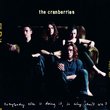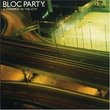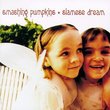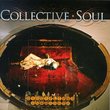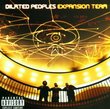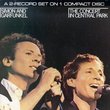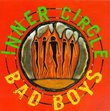| All Artists: Ludwig van Beethoven, David Zinman, Zurich Tonhalle Orchestra, Ruth Ziesak, Steve Davislim Title: Beethoven: Symphony No. 9 Members Wishing: 0 Total Copies: 0 Label: Arte Nova Classics Release Date: 6/14/2005 Genre: Classical Styles: Historical Periods, Classical (c.1770-1830), Symphonies Number of Discs: 1 SwapaCD Credits: 1 UPC: 723721121457 |
Search - Ludwig van Beethoven, David Zinman, Zurich Tonhalle Orchestra :: Beethoven: Symphony No. 9
 | Ludwig van Beethoven, David Zinman, Zurich Tonhalle Orchestra Beethoven: Symphony No. 9 Genre: Classical
|
Larger Image |
CD DetailsSimilarly Requested CDs
|
CD ReviewsI'd Give It Four and a Half Stars if I Could M. C. Passarella | Lawrenceville, GA | 12/06/2005 (4 out of 5 stars) "Yes, this is a fast, fast version of Beethoven's Ninth Symphony. But a couple of observations: First, one reason it clocks in at just over an hour is that Zinman doesn't take the repeat in the first movement--a mistake, I think, since the repeat is necessary to give proper proportion to the work and because the exposition first ending introduces an air of suspense that is part and parcel of the overall design. Second, the only truly controversial tempo that Zinman takes is for the Trio of the Scherzo. Here, the orchestra sounds like they're fumbling a bit to keep up with the stick and that Zinman is frowningly dragging them along--not a pretty sound picture, after all. Otherwise, the tempos are not outrageous, though the chug-chug string figures in the development section of the first movement sound less mechanical if left to breathe a little and though the Adagio would have more of its usual tenderness if taken a shade slower; this really is an Andante grading to Allegretto. But still, even given that certain bits could benefit from a slightly slower tempo, Zinman's is certainly a worthy interpretation, tremendously exciting in the Scherzo, colorful and varied in the variations section of the last movement. That Turkish percussion sounds really neat at the start of the tenor's all' Marcia variation, and the tenor here, Steve Davislim, sings with a nice swagger and with fresh-voiced relish. I'm happy, in fact, with the solo quartet, who acquit themselves well in their solos and blend very nicely in the ensemble bits. The chorus, small sounding as Beethoven's original one probably was, is nimble, fully committed to Zinman's conception. Zinman's whirlwind tempo means that he can include a variant ending starting at the all' Marcia. Beethoven had originally included a large pause at bar 747, right before the end of the final choral variation before the coda. He later struck this from the score, and that is the version that has been followed ever since. Still, it's interesting to hear what the first audiences heard and to reflect that this might have been the way we would always hear the finale. The pause makes musical sense, even if it is jarring to anyone who has heard the work more than once. The recording is quite good: those drum thwacks in the Scherzo are hair-raising. The double basses in the finale don't quite thunder as they do in, say, Solti's Chicago version, but this is probably the function of a small--maybe much smaller--string section. Brass and percussion come shining through in the manner of original-instrument practice. There is a curious grumbling sound at the start of the finale; I assume this is a too-closely miked double bassoon. But otherwise the sound is pretty natural in its balance. All things considered, this is a distinguished and in spots distinctive Beethoven Ninth." Highs and lows of Zinman's breakneck performance Bob D'Augustine | Glassboro, NJ | 11/13/2009 (4 out of 5 stars) "The performance of the Ninth by David Zinman with the Tonhalle Orchestra of Zurich is the briskest I've ever heard. In fact, the total time of the performance is slightly less than 60 minutes, compared to about 70 minutes or more for most other performances. (Don't be fooled by the listed playing time for the disk of 72+ minutes; Zinman actually provides two versions of the last portion of the fourth movement.)
For most sections of the symphony, the brisk pacing is interesting; and at times it is quite exhilarating. In the Turkish March section of the fourth movement, for example, the intensity of the forward movement compels one's admiration. The tenor solo that follows ("joyfully, like a hero to victory") is also powerfully done. But in certain other sections, the brisk pace is unsatisfying or even causes breakdowns in the flow of the music. In my opinion, the fast tempo (relatively speaking) that Zinman selects for the third movement (Adagio molto e cantabile), completely misses the sublime heights that most conductors reach here so effortlessly. Even worse is the middle section of the second movement (Molto vivace), where the headlong pace leads to complete disintegration of ensemble playing at several points. It almost goes without saying that in most parts of the beginning and end of the second movement, the three-note pattern that forms the key motif of the movement ("BOM-ba-bom") is elided down to two notes ("BOM-bom"). Still, the overall effect of this original approach to Beethoven's Ninth is quite stimulating. " |

 Track Listings (6) - Disc #1
Track Listings (6) - Disc #1